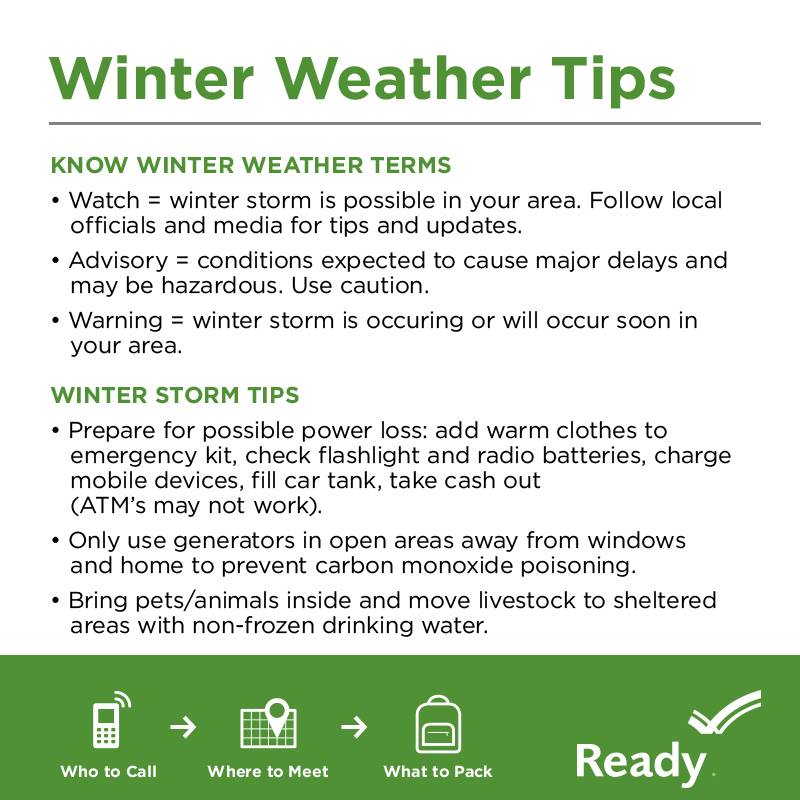 Perform a thorough inspection before winter weather sets in to ensure your truck is ready to handle the challenging conditions. Checking your tires, brakes, battery, lights, and fluids is crucial for safe and reliable driving during this time of the year. By addressing any necessary repairs or maintenance now, you can avoid potential breakdowns or accidents later on.
Perform a thorough inspection before winter weather sets in to ensure your truck is ready to handle the challenging conditions. Checking your tires, brakes, battery, lights, and fluids is crucial for safe and reliable driving during this time of the year. By addressing any necessary repairs or maintenance now, you can avoid potential breakdowns or accidents later on.
Start by examining your tires. Check the tread depth and look for any signs of wear or damage. In winter, it is especially important to have adequate traction on the road. Consider switching to winter tires if you live in an area with heavy snowfall. Don’t forget to also inspect the tire pressure and ensure it is at the recommended level.
Next, focus on the brakes. Cold temperatures can affect braking performance, so it is essential to have your brakes in optimal condition. Check the brake pads and rotors for any signs of wear. If you notice any squeaking or grinding noises when you apply the brakes, it may be time for a replacement. Additionally, make sure the brake fluid is at the correct level and consider having it flushed if it hasn’t been done recently.
Battery health is crucial during winter as the cold weather can drain its power. Inspect the battery terminals for any corrosion and clean them if necessary. If your battery is more than a few years old or has been showing signs of weakness, consider getting it tested or replaced to avoid unexpected breakdowns on cold winter days.
Lights are another important aspect to inspect. Ensure that all your lights, including headlights, taillights, brake lights, and turn signals, are in working order. Visibility is crucial during winter, so make sure your headlights are properly aligned and have clear lenses. Replace any bulbs that are burnt out or dim.
Lastly, pay attention to the fluids in your truck. Check the coolant, oil, and windshield washer fluid levels. Consider using a winter-grade windshield washer fluid that won’t freeze in cold temperatures. Additionally, if you haven’t had an oil change recently, it may be a good idea to do so before winter.
By performing a thorough inspection and addressing any necessary repairs or maintenance, you can ensure that your truck is prepared to handle the challenges of winter weather. Taking these proactive steps will not only enhance your safety on the road but also help extend the life of your vehicle. Don’t wait until it’s too late – invest the time and effort now to enjoy worry-free driving throughout the winter season.
Prepare an emergency kit with essential items to stay safe and comfortable during unexpected winter weather. Stock up on a blanket, warm clothing, non-perishable food, water, a flashlight, a snow shovel, jumper cables, a first aid kit, and an ice scraper. These items are crucial in case you find yourself in a snowstorm or stranded on a cold winter day.
A blanket is a must-have in any emergency kit. It provides warmth and insulation, making it essential during extreme cold weather. Alongside a blanket, pack warm clothing such as gloves, hats, and extra layers. These items will help you retain body heat and prevent hypothermia in case you are stuck outdoors for an extended period.
Non-perishable food is vital for long periods of isolation or when access to grocery stores is limited. Pack canned goods, energy bars, and dried fruits that can sustain you during a winter storm. Water is equally important, as it can be challenging to find a reliable water source during emergencies. Store enough water to keep yourself hydrated for at least three days.
A flashlight is a handy tool during power outages or when visibility is low. It will help you navigate in the dark and signal for help if needed. Make sure to include extra batteries in your emergency kit to ensure the flashlight remains functional for an extended period.
A snow shovel is essential for clearing pathways or digging your way out of snowdrifts. It allows you to create a safe path and prevent accidents when moving around during heavy snowfall. Moreover, keep jumper cables in your kit to jump-start your vehicle if the battery dies due to the cold weather.
A first aid kit is a crucial component of your emergency kit. It should include bandages, antiseptic wipes, pain relievers, and any necessary prescription medications. During winter, slips, falls, and accidents are more common, so being prepared with a first aid kit can be a lifesaver.
Lastly, include an ice scraper to remove ice and snow from your car’s windows. It will improve visibility, making it safer to drive during winter conditions. Remember to keep your emergency kit easily accessible. Storing it in the trunk of your car or near the front door of your house ensures that it is within reach during emergencies.
In conclusion, preparing an emergency kit is essential to stay safe and comfortable during unexpected winter weather. Don’t forget to include a blanket, warm clothing, non-perishable food, water, a flashlight, a snow shovel, jumper cables, a first aid kit, and an ice scraper. Being well-prepared with these items will ensure that you can handle any winter emergency with ease and peace of mind.
Winter driving conditions can be treacherous, especially when it comes to navigating snowy and icy roads. As a truck owner, it is crucial to take the necessary precautions to ensure your vehicle’s safety and handling during this challenging season. One of the most effective ways to enhance traction on slippery surfaces is by installing winter tires or tire chains. These options offer significant benefits that can make a world of difference when driving in winter conditions.
Switching to winter tires is a smart move that greatly improves your truck’s traction on snow and ice. Unlike regular tires, winter tires are specifically designed to perform better in cold weather. Their unique tread patterns and softer rubber compounds allow for increased grip on slippery surfaces, reducing the chances of skidding or losing control. Winter tires also have sipes, small slits on the tread blocks, that help enhance traction by biting into the snow or ice. By investing in winter tires, you can significantly enhance your truck’s safety and handling on winter roads.
Another option to consider is the installation of tire chains. Tire chains provide an extra layer of traction, allowing your truck to navigate even the iciest of roads with ease. Chains work by providing additional grip on the road surface, giving you better control and reducing the risk of accidents. When properly installed, they can significantly improve your truck’s ability to accelerate, brake, and steer on slippery surfaces. It is important to note that tire chains are typically required in certain regions with heavy snowfall or when driving through mountainous areas during winter. Their use is often mandated by local authorities to ensure the safety of both drivers and other road users.
Investing in winter tires or tire chains is a proactive step towards ensuring your truck’s safety during winter conditions. However, it is essential to remember that these options are not a substitute for responsible driving practices. Even with winter tires or chains, it is crucial to adjust your driving style to the road conditions. Maintain a safe and reasonable speed, leave ample space between you and other vehicles, and avoid sudden maneuvers that could lead to skidding or loss of control. Additionally, regularly check the condition of your tires, including tread depth and tire pressure, to ensure optimal performance. Proper maintenance and responsible driving, coupled with winter tires or chains, will significantly enhance your truck’s safety during winter.
In conclusion, installing winter tires or tire chains is a wise investment for truck owners looking to navigate winter roads safely. These options greatly improve traction on snow and ice, reducing the risk of accidents and providing better control over your vehicle. Remember, responsible driving practices are just as crucial as having the right equipment. By combining winter tires or chains with careful driving and regular maintenance, you can confidently tackle winter conditions with your truck and ensure a safer journey for yourself and others on the road.
Practice Safe Driving Techniques: Adjust Your Driving Style to Match the Conditions
Driving a truck can be a demanding task, requiring not only precision and skill but also a keen awareness of the ever-changing road conditions. Whether you are a seasoned truck driver or just starting out, it is crucial to prioritize safety on the roads. By practicing safe driving techniques, you can minimize the risk of accidents and ensure a smooth and secure journey. Here are some essential tips to help you adjust your driving style to match the conditions.
First and foremost, it is essential to slow down. When driving a truck, especially in adverse weather conditions, reducing your speed is crucial for maintaining control over your vehicle. By slowing down, you allow yourself more time to react to unexpected situations and avoid potential hazards. Additionally, a lower speed reduces the risk of skidding or losing control on slippery surfaces, such as rain-soaked roads or icy patches.
Furthermore, always maintain an adequate distance between your truck and other vehicles. The sheer size and weight of a truck make it more difficult to come to a sudden stop. As a result, leaving enough space between you and the vehicle in front can provide you with the necessary time and distance to react and maneuver safely. Remember that tailgating is not only dangerous but also increases the likelihood of a collision if the vehicle in front suddenly brakes.
While on the road, be mindful of black ice – a treacherous hazard that can often go unnoticed. Black ice is a thin and transparent layer of ice that forms on the road surface, making it extremely slippery. Recognizing black ice can be challenging, as it blends in with the asphalt, but there are signs to watch out for. Shiny, glossy areas on the road, particularly in shaded or low-lying sections, are indications of black ice. If you suspect the presence of black ice, maintain a steady speed, avoid sudden maneuvers, and gently apply the brakes when necessary.
Staying alert and focused while driving is paramount to ensure your safety and the safety of others on the road. Avoid distractions, such as using your phone or engaging in other activities that divert your attention away from driving. It only takes a split second of inattention to cause a potentially life-threatening situation. By maintaining a vigilant mindset and concentrating solely on the road, you can react promptly to any unforeseen circumstances that may arise.
In conclusion, practicing safe driving techniques is crucial for truck drivers. Adjusting your driving style to match the conditions requires slowing down, maintaining a safe distance from other vehicles, remaining mindful of black ice, and staying alert and focused on the road. By adhering to these principles, you can reduce the risk of accidents and ensure a smooth and secure journey. Remember, safety should always be your top priority when behind the wheel.



